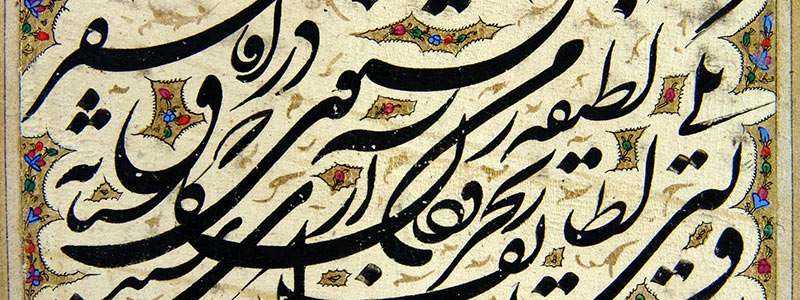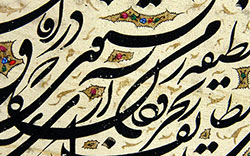Sayyed ‘Ali Akbar Hasani Hosayni, son of Ebrahim, was born in Isfahan in 1857 CE. He was known by the title “Sayyed Golestāneh”, which he gained as a young man. After his elementary education in the sciences and the art of calligraphy, he travelled to a number of cities and ultimately put down roots Tehran where, after getting settled, he spent a period of time teaching in the Sepahsālār School (currently known as the Shahid Mottahari School). After becoming experienced in Naskh and Nasta‘liq script, he became interested in the Shakastah Nasta‘liq script and, like other contemporary calligraphers working in the Shakastah script, worked on emulating the works of ‘Abd-al-Majid. The works of Sayyed Golestāneh produced up until the year 1896 CE show this influence.
Having been influenced by Gholām Rezā Esfahāni, Sayyed Golestāneh spent some time working on the Jalli (clear cursive) style of writing Shakastah Nasta‘liq. At times, while practicing Nasta‘liq, he would sometimes use ‘Abd-al-Majid’s signature, until around 1898 CE when he settled into his own style, a development which would lead him to became one of the most enduring masters of Shakastah Nasta‘liq. Most of his extant works were written between 1890 CE and 1909 CE. They include precious albums which he had collected for nobles under Qājār rule. Unlike certain calligraphers of the Shakastah Nasta‘liq script such as Sayyed ‘Ali Niāz Shirāzi, he generally showed less interest in making highly ornamented books. Several reproductions of albums containing his works were recently published in Tehran, and he continues to have a significant following amongst contemporary calligraphers of Shakastah.
Golestāneh died in 1901 CE.




